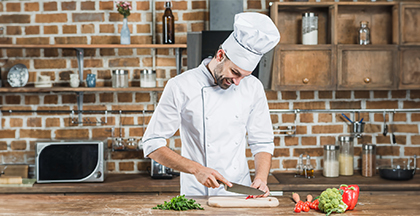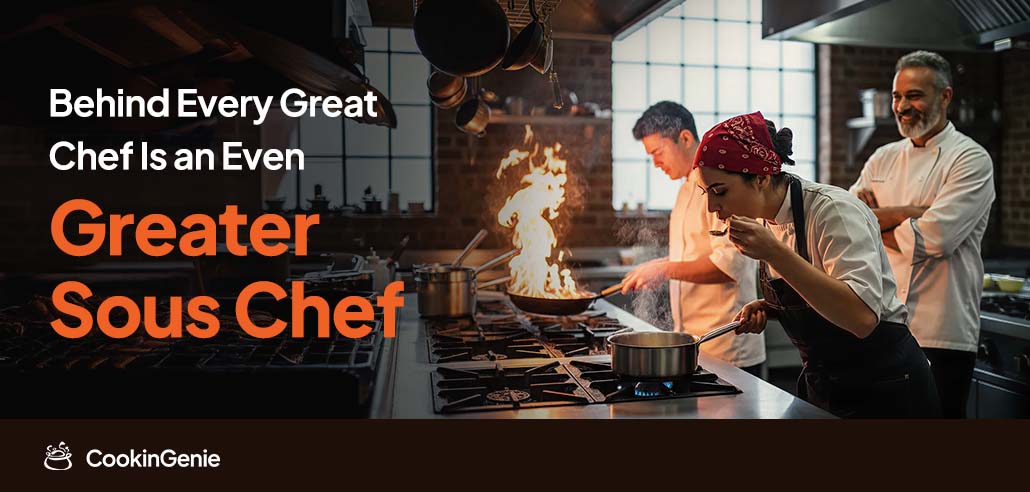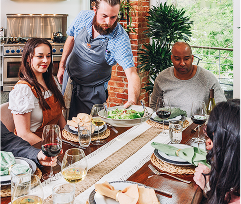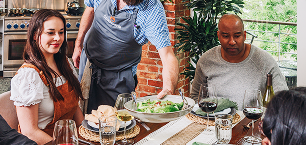Charcuterie Through the Ages: A Tasty Journey into the Origin, Evolution, and Art of Charcuterie Boards
Charcuterie boards have officially gone from rustic appetizer to centerpiece status—gracing everything from Pinterest parties to Michelin-level tasting menus. But while we all love snapping pics of brie and salami roses, few people know the history behind this artful arrangement of cured meats and fancy cheese. So… what is charcuterie?
Whether you’re planning an elegant soirée or simply tired of winging it with deli meat and cheddar, this blog is your delicious guide through the origin of charcuterie, its cultural evolution, and how you (or better yet, your chef) can build a board that’s as refined as your taste.
What Is Charcuterie?
Let’s start with the basics: What does charcuterie mean?
The word charcuterie (pronounced shar-koo-tuh-ree) comes from the French words chair (flesh) and cut (cooked). Traditionally, it refers to the culinary art of curing, smoking, and preserving meats—especially pork. Think pâté, prosciutto, salami, and rillettes.
But in today’s gourmet scene, the definition of a charcuterie board has broadened. It now includes cheese, crackers, fruit, nuts, pickles, jams, and even sweets. It’s become a curated experience—a stylish symphony of taste, texture, and color that appeals to foodies and aesthetes alike.
What Is a Charcuterie Platter?
The terms charcuterie board and charcuterie platter are often used interchangeably, but there’s a subtle difference.
A charcuterie board typically refers to a wooden serving board or slate on which the items are displayed. It’s rustic, elegant, and perfect for intimate gatherings.
A charcuterie platter, on the other hand, is more functional. It’s often arranged on large trays for events or catered spreads. It’s the classic go-to for weddings, wine tastings, and upscale cocktail hours.
Whether you’re after a classic charcuterie board or a jaw-dropping party platter, the goal is to combine flavors, textures, and visuals into one mouthwatering masterpiece.
The Origin of Charcuterie: Where It All Began
The origin of charcuterie is rooted in necessity. Long before refrigerators and Whole Foods, ancient civilizations had to get creative to preserve meat. Curing and salting dates back to Ancient Rome, where meats were preserved with salt and spices to last through the seasons.
But it was in medieval France where charcuterie became an art form. By the 15th century, French charcutiers (pork butchers) began specializing in transforming every part of the pig into gourmet products. France even established official guilds for charcutiers to regulate quality and practices.
So, when you ask what charcuterie means, know that it’s more than meat—it’s centuries of craftsmanship and cultural pride wrapped in a slice of prosciutto.
Who Invented Charcuterie Boards?
If you’re wondering who invented charcuterie boards, the answer isn’t a single person—it’s a blend of culture, time, and culinary evolution.
French charcutiers may have formalized the products, but arranging them into a beautiful spread evolved later, influenced by artistic presentation trends. The practice became more refined in the 19th and 20th centuries, with high-end restaurants and caterers turning charcuterie into edible art.
Today, the traditional charcuterie board has gone global—featuring ingredients from every corner of the world and reflecting the host’s (or chef’s) personality and palate.
The Evolution of the Charcuterie Board Over Time
Charcuterie has come a long way from salted pork in a medieval village. Here’s a bite-sized look at its journey:
Pre-Industrial Era (1400s–1800s)
- Focus on seasonal, locally preserved meats and cheeses.
- Boards reflected regional specialties and family traditions.
Industrial Revolution (1900s–1950s)
- Refrigeration, mass production, and easier access to meats.
- Charcuterie became more accessible outside of Europe.
Modern Era (1960s–Today)
- Boards go artisanal: small-batch meats, farm cheeses, and global ingredients.
- Influencers, chefs, and food stylists elevate the presentation.
- The experience becomes as visual as it is flavorful.
Thanks to centuries of culinary evolution, your classic charcuterie board might now include Spanish chorizo, French brie, California almonds, and a drizzle of truffle honey.
The Global Influence on Today’s Charcuterie Trends
As travel, trade, and technology shrank the world, charcuterie got a major glow-up.
Today’s boards borrow from international flavors—Moroccan fig jam, Japanese pickled ginger, Mexican manchego, and Middle Eastern labneh. The modern charcuterie experience is as likely to include a smoked salmon rose as it is to have soppressata.
Global fusion boards are trending at upscale events and curated dinners, where private chefs offer custom experiences that reflect both tradition and bold innovation.
The charcuterie board definition now extends beyond European borders—embracing a world of tastes, all artfully arranged.
Essential Ingredients of a Classic Charcuterie Board
You can always freestyle, but a traditional charcuterie board follows a few key categories:
- Meats: salami, prosciutto, capicola, or pâté.
- Cheeses: mix soft, hard, and aged—brie, manchego, gouda, goat cheese.
- Bread & Crackers: crostini, seeded crackers, artisan baguettes.
- Fruits: grapes, figs, apples, berries—fresh or dried.
- Pickled/Vinegary Accents: cornichons, olives, artichoke hearts.
- Extras: honeycomb, grainy mustard, jam, edible flowers, nuts.
For extra flair, a private chef can design your board around your event’s theme or seasonal ingredients—making every bite a curated experience.
Tips to Build the Perfect Charcuterie Spread
Want to impress your guests—or indulge yourself? Here’s how to create (or commission) a stunning spread:
- Start with structure: Place bowls for dips or spreads first. Then, build around them.
- Mix textures: Combine creamy, crunchy, chewy, and crisp elements.
- Think color: Use fruits, herbs, and colorful cheeses for visual appeal.
- Pair smartly: Salty meats + sweet jam = flavor explosion.
- Board matters: Use wood, slate, or marble. Size depends on your guest count.
Bonus tip: Add luxury with edible flowers, gold-dusted figs, or caviar pearls. And if that sounds like too much prep—this is where a private chef steps in to save the day (and your kitchen).
A Culinary Time Capsule on a Board
From Roman salt-curing to Instagram-worthy spreads, charcuterie boards have evolved into an edible art form that celebrates history, flavor, and creativity.
They’ve become more than just an appetizer—an expression of taste, tradition, and culture. Whether you’re drawn to a classic charcuterie board or prefer an exotic fusion platter, every slice has a story.
So next time you entertain (or want to treat yourself), consider skipping the grocery store scramble. Instead, let a private chef create a custom board tailored to your event, style, and palate. Nothing says luxury like a curated charcuterie experience—without lifting a finger.
Frequently Asked Questions (FAQ)
A charcuterie board is a stylish food display featuring an assortment of cured meats, cheeses, crackers, fruits, and condiments—often served on a wooden or slate board. It blends culinary tradition with creative presentation and is a favorite for modern hosting.
A classic charcuterie board includes a selection of cured meats like prosciutto and salami, a mix of cheeses (soft, hard, and aged), crusty bread or crackers, fresh and dried fruits, pickled vegetables, and nuts. It spreads such as mustard or fig jam. It’s all about balance—flavor, texture, and presentation.



 Settings
Settings
 Gift Card
Gift Card Blog
Blog Locate Us
Locate Us










 Home
Home
 Chefs
Chefs
 Chats
Chats
 My Order
My Order



